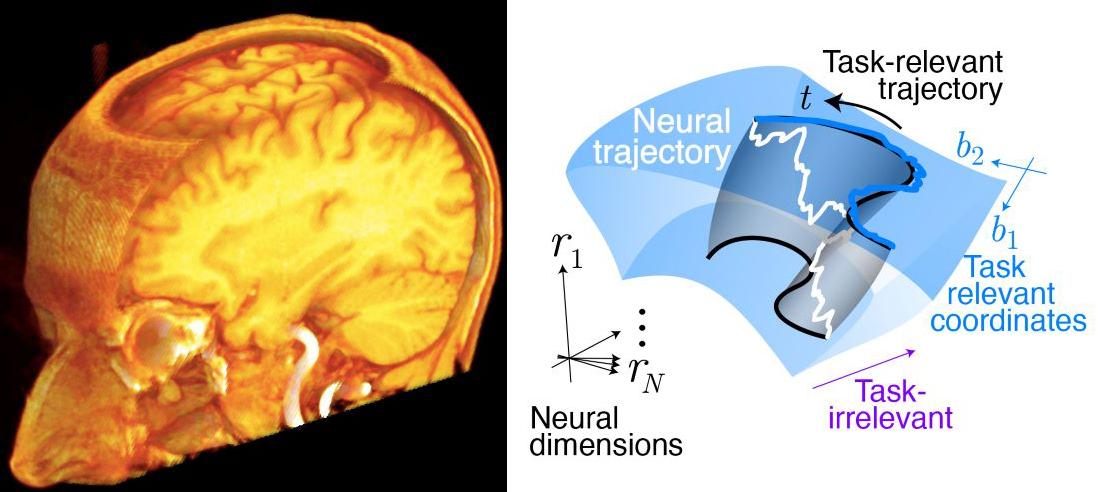Abstract:
Complex behaviours are often driven by an internal model, which integrates sensory information over time and facilitates long-term planning to reach subjective goals. A fundamental challenge in neuroscience is: how can we use behaviour and neural activity to understand this internal model and its dynamic latent variables? Here we interpret behavioural data by assuming an agent behaves rationally — that is, it takes actions that optimize its subjective reward according to its understanding of the task and its relevant causal variables. We apply a new method, Inverse Rational Control (IRC), to learn an agent's internal model and reward function by maximizing the likelihood of its measured sensory observations and actions. This thereby extracts rational and interpretable thoughts of the agent from its behaviour. We also provide a framework for interpreting encoding, recoding and decoding of neural data in light of this rational model for behaviour. When applied to behavioural and neural data from simulated agents performing suboptimally on a naturalistic foraging task, this method successfully recovers their internal model and reward function, as well as the Markovian computational dynamics within the neural manifold that represents the task. This work lays a foundation for discovering how the brain represents and computes with dynamic latent variables.

Biography:
Xaq Pitkow is a computational neuroscientist aiming to explain brain function by constructing quantitative theories of how distributed nonlinear neural computation implements principles of statistical reasoning to guide action. Although he is a theorist, he at one point did perform neuroscience experiments, and still collaborates closely with experimentalists to ground his theories, help design experiments, and analyze data. He was trained in physics as an undergraduate student at Princeton, and went on to study biophysics for his Ph.D. at Harvard. He then took postdoctoral positions in the Center for Theoretical Neuroscience at Columbia and in the department of Brain and Cognitive Sciences at the University of Rochester. In 2013 he moved to Houston to become a faculty member at the Baylor College of Medicine in the department of Neuroscience, with a joint appointment at Rice University in the Department of Electrical and Computer Engineering. He has been a professional graphic artist since he was 12, and enjoys sculpting and digital art, which he often integrates into his scientific work. He also enjoys improvisation on piano, tabla, and two dozen other musical instruments.
Click here to register via eventbrite.